LOC TU’S ALUMINUM FOIL ROLL DISPENSER BOX: GUIDE TO OPTIMIZING KITCHEN
LOC TU’S ALUMINUM FOIL ROLL DISPENSER BOX: A GUIDE TO OPTIMIZING KITCHEN WORKFLOW AND SAFETY
Beyond the Roll: The Dispenser as a Pillar of Kitchen Operations
TABLE OF CONTENTS
The Foundational Upgrade: Why a Professional Dispenser Box is Non-Negotiable Engineering Excellence: Deconstructing the Loc Tu Dispenser Box Quantifying the Value: A Cost-Benefit Analysis Beyond Per-Unit Price System Integration: The Dispenser's Role in a Modern Kitchen Ecosystem Partnership & Procurement: Sourcing the Loc Tu Solution with Confidence
1. The Foundational Upgrade: Why a Professional Dispenser Box is Non-Negotiable
From Retail Frustration to Professional Fluidity: A Case Study
The Key Strategic Advantages of Integrating the Loc Tu System
Strength - Operational Efficiency & Speed: The primary strength is the radical improvement in workflow. The dispenser is designed for one-handed operation, allowing kitchen staff to multitask effectively. The time saved from no longer struggling with a flimsy box, un-jamming the roll, or trying to achieve a clean tear, accumulates into significant labor cost savings over thousands of repetitions per week.Strength - Enhanced Safety & Risk Mitigation: The Loc Tu system features a contained, shielded cutting mechanism. This design completely eliminates the exposed, jagged metal edge found on retail boxes, which is a leading cause of nuisance cuts in professional kitchens. This mitigates a direct workplace hazard, reducing injury logs, potential liability, and a negative impact on staff morale.Opportunity - Drastic Waste Reduction & Cost Control: The precision cutter guarantees a usable, clean-edged sheet every time. This virtually eradicates waste from tearing, crumpling, and tangled starts. By controlling material consumption so precisely, businesses can achieve a far lower total cost per usable meter of foil, turning a simple process into a measurable source of savings and improved sustainability credentials.Opportunity - Food Safety & Cross-Contamination Control: A professional, often mountable, dispenser creates a fixed "hygiene point" for foil. It prevents the box from being placed on unsanitized surfaces, a common issue with loose retail rolls. The clean cutting mechanism also ensures that no cardboard or adhesive fragments from a deteriorating retail box contaminate the food preparation area, upholding stricter HACCP and food safety protocols.
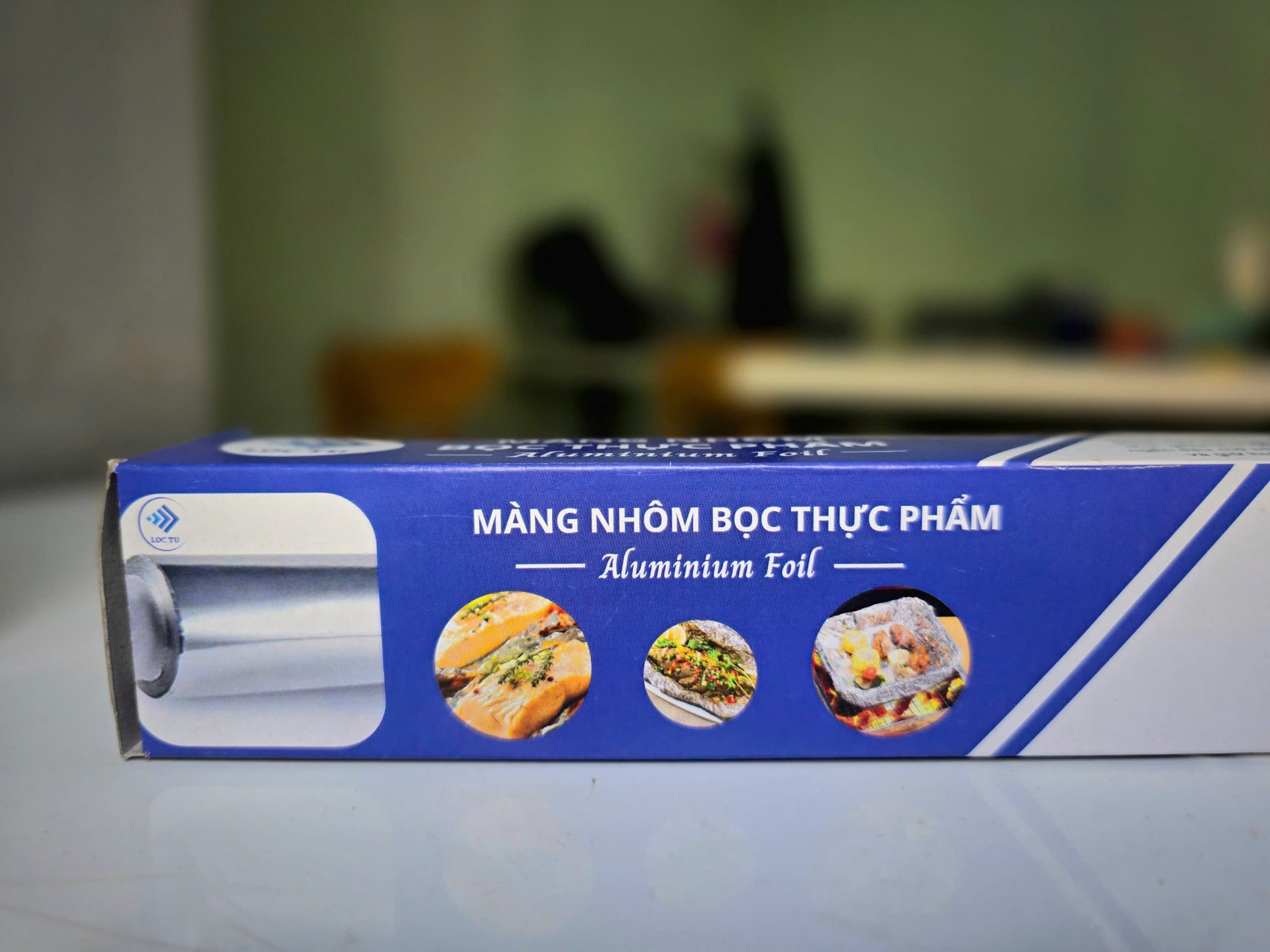
From chaotic waste to professional precision: The operational impact of a purpose-built system.
2. Engineering Excellence: Deconstructing the Loc Tu Dispenser Box
Mandatory Design and Material Specifications for Professional Use
Chassis Construction: The dispenser box chassis is constructed from high-density, multi-ply corrugated cardboard with a moisture-resistant coating. This is a critical departure from flimsy retail-grade paperboard. This construction prevents structural degradation from ambient humidity, steam, and splashes common in professional kitchens, ensuring the integrity of the dispensing mechanism throughout the life of the roll.Cutting Mechanism: The system utilizes an integrated, shielded slide cutter or a reinforced, precision-serrated metal blade. This mechanism is recessed and designed for safety, minimizing finger exposure. It is engineered to cut heavy-duty foil (up to 25 microns) cleanly without catching or tearing the material.Foil Alloy & Gauge Certification: The enclosed aluminum foil roll itself is of paramount importance. Loc Tu guarantees the material is a certified food-grade alloy, compliant with all relevant health and safety standards (e.g., FDA, BRC). The exact thickness (gauge in microns) is specified and consistent, ensuring reliable performance for high-heat cooking, wrapping, and storage. Full traceability and certification documentation must be available upon request.Core Locking Technology: The dispenser features an integrated roll stabilization system. This mechanism secures the central cardboard tube, preventing the roll from "free-spinning" or becoming dislodged within the box. This ensures a smooth, taut pull every time, which is essential for the cutting mechanism to function optimally and to prevent the roll from jamming.
The Ergonomics and Safety Protocol Walkthrough
Step 1: Secure Installation & Anchoring. For maximum efficiency, the Loc Tu box should be placed on a non-slip surface or, for optimal ergonomics, mounted using a dedicated wall bracket. This creates a stable dispensing station, freeing up both of the user's hands and eliminating the fumbling associated with holding and tearing a loose retail box.Step 2: The Ergonomic Pull. The user grasps the leading edge of the foil and pulls it out horizontally to the desired length. The internal core-locking system provides a slight, consistent tension, preventing the roll from unspooling uncontrollably and ensuring the foil remains flat and untangled.Step 3: The Safe-Cut Action. Once the desired length is dispensed, the user engages the cutter. For slide-cutter models, a simple swipe of the ergonomic slider across the track severs the foil with a perfectly straight edge. For serrated models, a simple upward and sideways motion against the reinforced blade provides a clean tear. In both designs, the user's hands are kept away from the cutting edge, a fundamental principle of occupational safety.Step 4: Immediate Readiness. The system is now reset. The leading edge of the foil remains slightly proud of the box, ready for the next use. There is no need to dig for a lost edge or peel a tangled starting point, saving crucial seconds on every subsequent task. This four-step process, when repeated hundreds of times a day, represents a monumental gain in operational efficiency and a profound reduction in workplace hazards.

Precision engineering: A clean, safe cut is the cornerstone of kitchen efficiency.
3. Quantifying the Value: A Cost-Benefit Analysis Beyond Per-Unit Price
Deconstructing the Total Cost of Ownership (TCO) of Foil Usage
Central Theme: The True Operational Cost of Aluminum Foil Branch 1: Direct Costs (The Tip of the Iceberg) Cost per Roll / Cost per Meter Logistics and Shipping Fees Storage Space Costs
Branch 2: Indirect Costs of an Inferior Dispensing System (The Hidden Bulk) Sub-Branch: Material Waste Costs Cost of crumpled, unusable foil from roll ends. Cost of jaggedly torn sheets that must be discarded. Cost of entire sections ruined by box failure (moisture, crushing). Financial impact of over-dispensing due to lack of control.
Sub-Branch: Labor Inefficiency Costs Wages for cumulative seconds/minutes spent finding the roll's edge. Labor cost of struggling to tear sheets on a broken box. Time spent cleaning up small, sharp foil fragments. Productivity loss during high-pressure service due to equipment failure.
Sub-Branch: Safety & Remediation Costs Cost of first-aid supplies (bandages, antiseptics) for nuisance cuts. Potential cost of lost time for more serious injuries. Impact on insurance premiums and worker's compensation claims. Erosion of staff morale due to recurring, preventable injuries.
Sub-Branch: Quality & Brand Reputation Costs Cost of food spoilage due to poorly sealed wrapping. Reputational damage from using unprofessional, torn foil for plating or take-away.
ROI Projection: How Loc Tu’s Professional System Pays for Itself
Assumptions: The restaurant uses 20 retail rolls (75 meters each) per month at a cost of $7.00 per roll. Total direct cost: $140/month.Performance Metrics: An audit reveals a conservative 15% material waste rate due to tearing, jamming, and damage.Calculated Waste Cost: 15% of $140 = $21.00 per month is literally thrown in the trash.Hidden Labor Cost: A conservative estimate of 5 minutes of labor wasted per roll dealing with dispenser issues. (20 rolls x 5 mins = 100 minutes/month). At an average kitchen wage ofTotal Monthly Cost (TCO): $140 (Direct) + $21 (Waste) +
Assumptions: The restaurant uses the equivalent meterage from Loc Tu professional dispensers, at a 15% higher per-unit price. Total direct cost: $140 * 1.15 = $161/month.Performance Metrics: The Loc Tu system reduces material waste to a mere 2%.Calculated Waste Cost: 2% ofHidden Labor Cost: Wasted time is reduced by 90% as the system is seamless. This cuts the hidden labor cost to$3.01 per month .Total Monthly Cost (TCO): $161 (Direct) + $3.22 (Waste) +
285.96 annually) when accounting for just two hidden variables. This analysis doesn't even quantify the significant financial benefits of improved safety, enhanced food quality, and staff satisfaction. The ROI is not just positive; it's immediate and substantial.
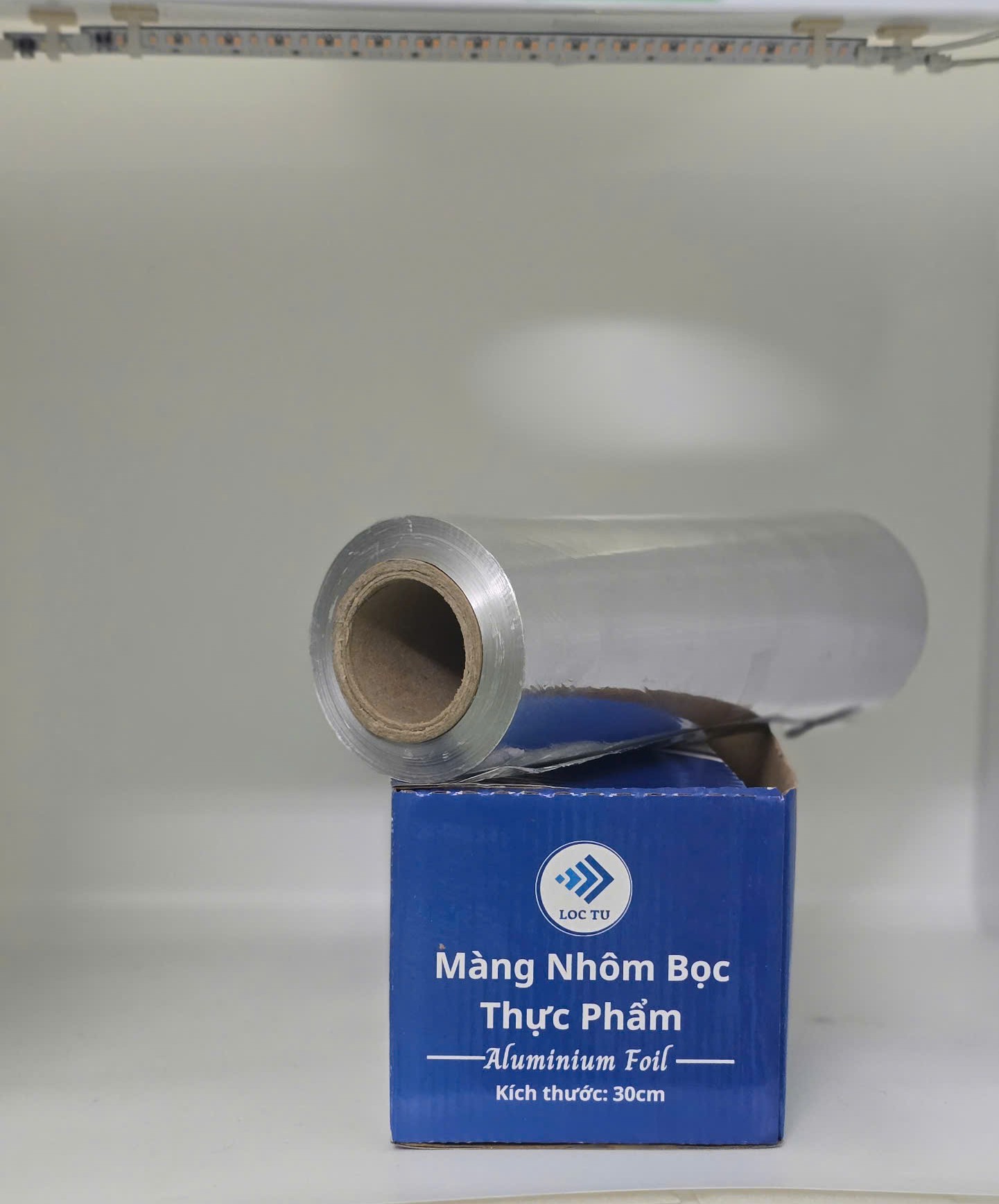
The Total Cost of Ownership: Investing in efficiency yields a clear financial return.
4. System Integration: The Dispenser's Role in a Modern Kitchen Ecosystem
The Evolution of Food Wrapping and Workflow in Professional Kitchens
Modular Workflow Applications of the Loc Tu System
The "Batch Prep & Portioning" Module: Components: (1) The Loc Tu Dispenser + (2) Standardized Gastronorm pans + (3) Pre-portioned ingredients.Application: At the prep station, staff can rapidly process large batches of ingredients (e.g., marinating chicken, portioning sauces). The Loc Tu dispenser provides perfectly sized, consistent sheets to cover each pan hygienically before it goes into the walk-in cooler. This standardization ensures proper sealing, prevents flavor transfer, and streamlines the inventory process. The speed of the dispenser allows one staff member to cover and label pans almost as fast as another can fill them.
The "Off-Site & Catering" Module: Components: (1) The durable, portable Loc Tu Dispenser Box + (2) Transport carriers + (3) Plating instructions.Application: For caterers, brand perception is paramount. Arriving on-site with a battered retail foil box is unprofessional. The robust Loc Tu box travels well and functions perfectly in any environment. It allows chefs to create clean, crisp foil linings for serving platters, professionally wrap hot items to retain heat, and perform finishing touches with an air of precision. This extends the professionalism of the main kitchen to any off-site location, ensuring brand consistency.
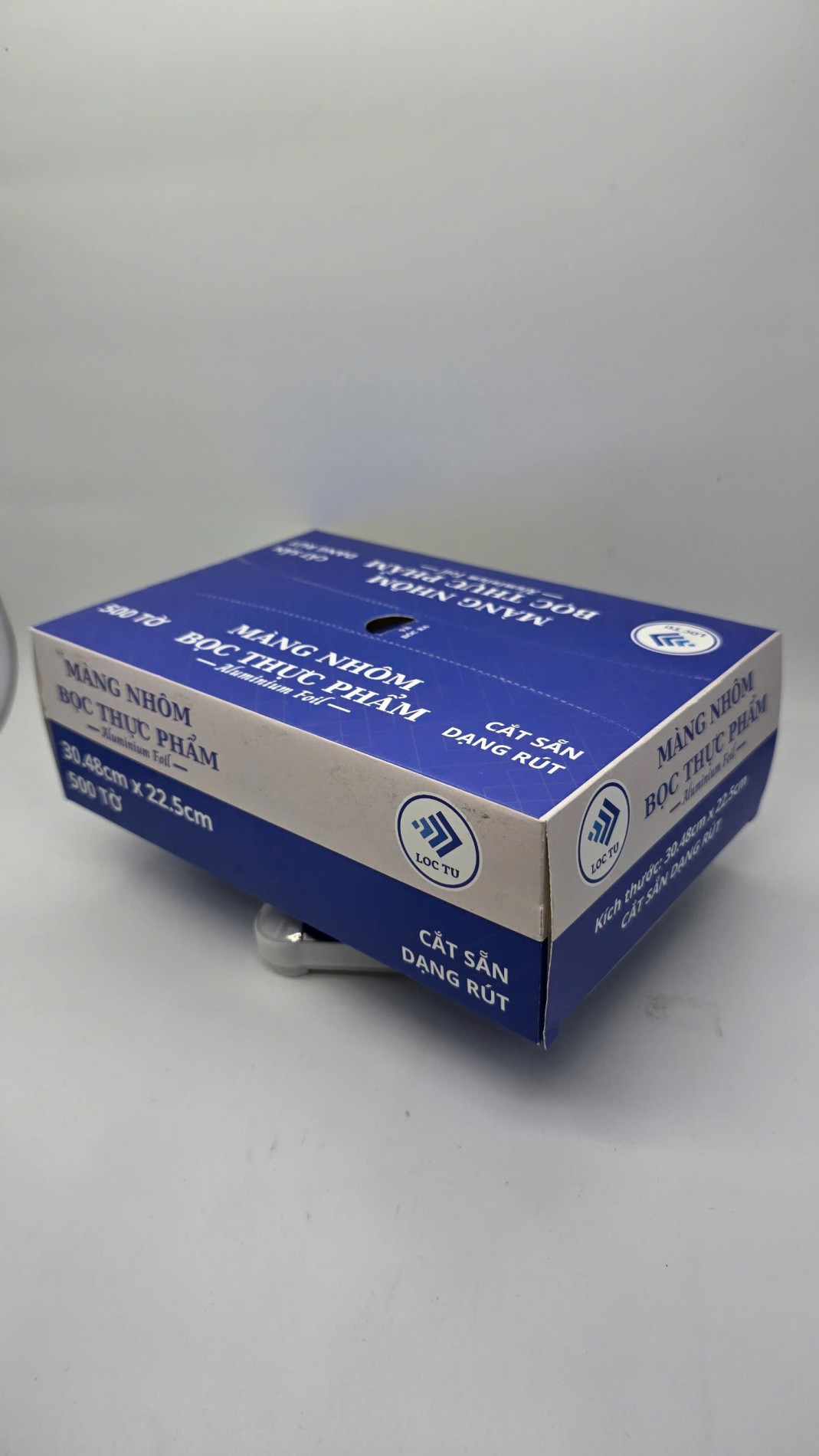
Fully integrated: A seamless component of the modern, efficient kitchen ecosystem.
5. Partnership & Procurement: Sourcing the Loc Tu Solution with Confidence
Vetting a Supplier: Moving Beyond Price to True Operational Value
The Loc Tu Commitment: A Supply Chain Partnership Model
Phase 1: Operational Needs Analysis. We don't just sell you a box. Our process begins with a consultation. Our specialists work with your team to understand your specific applications—high-heat oven use, freezer storage, customer-facing presentation—to recommend the precise foil gauge (thickness) and roll width that offers the best performance-to-cost ratio for your menu.Phase 2: Documentation & Compliance Assurance. Upon establishing a partnership, we provide a complete dossier of compliance documentation. This includes Food Grade material certifications, Certificates of Analysis (COA), and any other technical specifications required for your internal quality assurance programs or regulatory health inspections. Transparency is the bedrock of our partnership.Phase 3: Tailored Logistics & Supply Chain Reliability. We work with you to establish a supply schedule that matches your consumption velocity. This isn't just about placing orders; it's about creating a predictable, just-in-time logistics plan that minimizes your on-site storage requirements while completely eliminating the risk of stockouts.Phase 4: Ongoing Support & Optimization. Our relationship doesn't end at the delivery bay. We act as long-term partners, providing ongoing support and working with you to identify new opportunities for efficiency. As your menu evolves and your business grows, we are there to ensure your packaging and kitchen supply solutions evolve with you. This is the difference between a vendor and a true partner in your success.
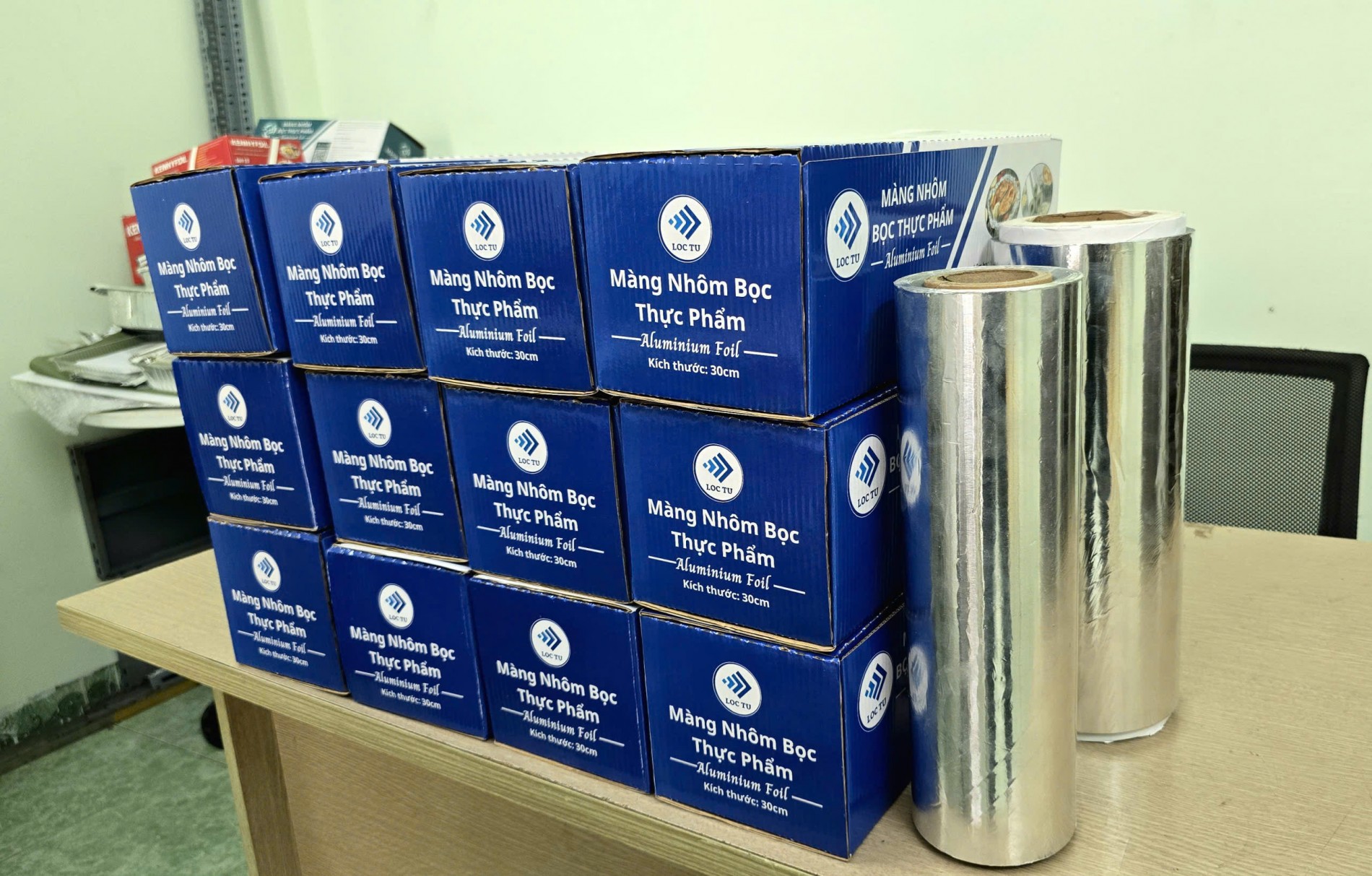
A partnership built on quality, reliability, and a shared commitment to operational excellence.
Loc Tu’s Dispenser Box: A Strategic Investment in Operational Mastery
Loc Tu: Pioneering Excellence in Premium Aluminum Packaging Solutions
Why You Must Choose Loc Tu?
✅ Assured Quality & Safety: Crafted from premium, food-grade aluminum, free from harmful impurities, meeting international safety benchmarks.
🔥 Optimal Thermal Properties: Ensures even cooking and excellent heat retention, preserving food temperature and taste effectively.
💪 Durable & Convenient Design: Engineered to resist leaks and dents, providing reliable performance for baking, storage, and transport.
🔄 Versatile Solutions: Our extensive range caters to various applications – from baking and steaming to storing fresh food and takeaway meals.
🌱 Eco-Conscious Packaging: Made from 100% recyclable aluminum, supporting sustainability and reducing plastic waste.
🎯 Brand Enhancement: Optional custom printing available to personalize products and boost your brand visibility.
🚚 Reliable Supply & Delivery: Capable of handling large orders with dependable, on-schedule nationwide shipping.
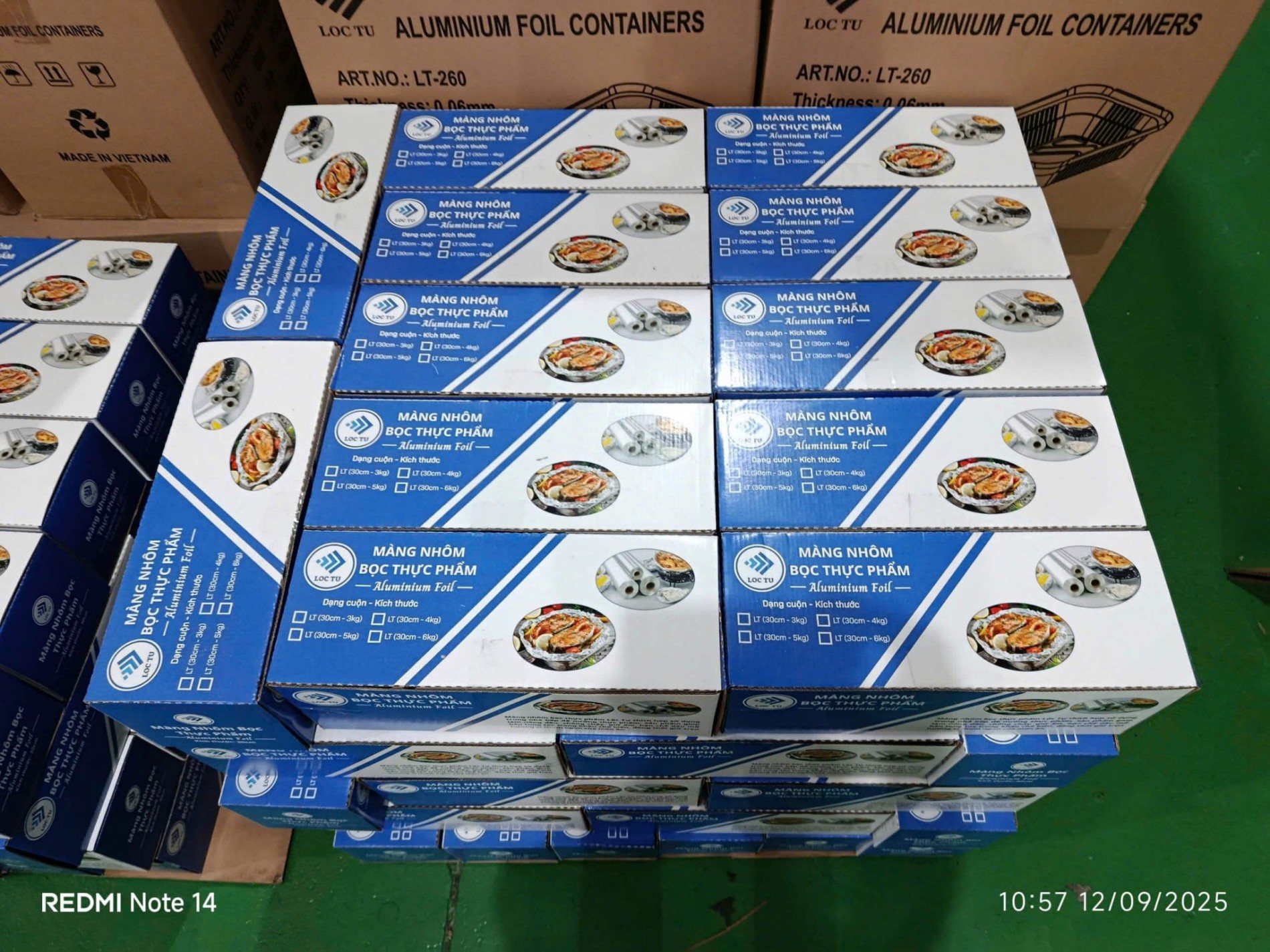
Loc Tu – Trusted Manufacturer of Durable Aluminum Foil Containers and High-Quality, Food-Safe Aluminum Foil Rolls for Your Kitchen
Your Trusted Partner in Food Packaging 📞
📌 LOC TU MANUFACTURING & TRADING CO., LTD
📌 Our Vietnamese Website: Khaynhomthucpham.com
📌 HOTLINE/ZALO: 0969.787.309
📌 Facebook: Aluminum Foil Loc Tu
📌 Youtube: Aluminum Foil Loc Tu
📌 Tik Tok: Aluminum Foil Loc Tu
📌 Instagram: Aluminum Foil Loc Tu
📌 Shopee: Aluminum Foil Loc Tu
📌 Twitter/X: Aluminum Foil Loc Tu
📌 LinkedIn: Aluminum Foil Loc Tu
📌 Pinterest: Aluminum Foil Loc Tu
📌 Tumblr: Aluminum Foil Loc Tu
📌 Threads: Aluminum Foil Loc Tu
📌 Telegram: Aluminum Foil Loc Tu
📌 Whatsapp: 0969.787.309
📌 Branch 1 (Hanoi): No. 1 Pham Tu, Beasky Building, Dai Kim Ward, Hoang Mai District, Hanoi
📌 Branch 2 (Binh Duong): No. 68, DX 051 Street, Group 17, Quarter 4, Phu My Ward, Thu Dau Mot City, Binh Duong Province
📞 Contact us today for expert consultation and the best pricing on premium aluminum trays and foil packaging solutions! 🚀
LOC TU PRODUCTION AND TRADING COMPANY LIMITED
Branch 1 (Binh Duong): No. 68, DX 051 Street, Group 17, Quarter 4, Phu My Ward, Thu Dau Mot City.
Branch 2 (Hanoi): No. 1 Pham Tu, Beasky Building, Dai Kim Ward, Hoang Mai District.
Hotline/Zalo: +84.969787309
Website: Khaynhomthucpham.com
Email: [email protected]